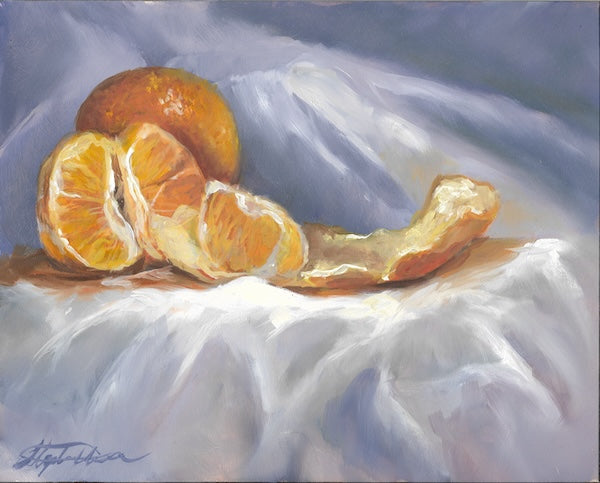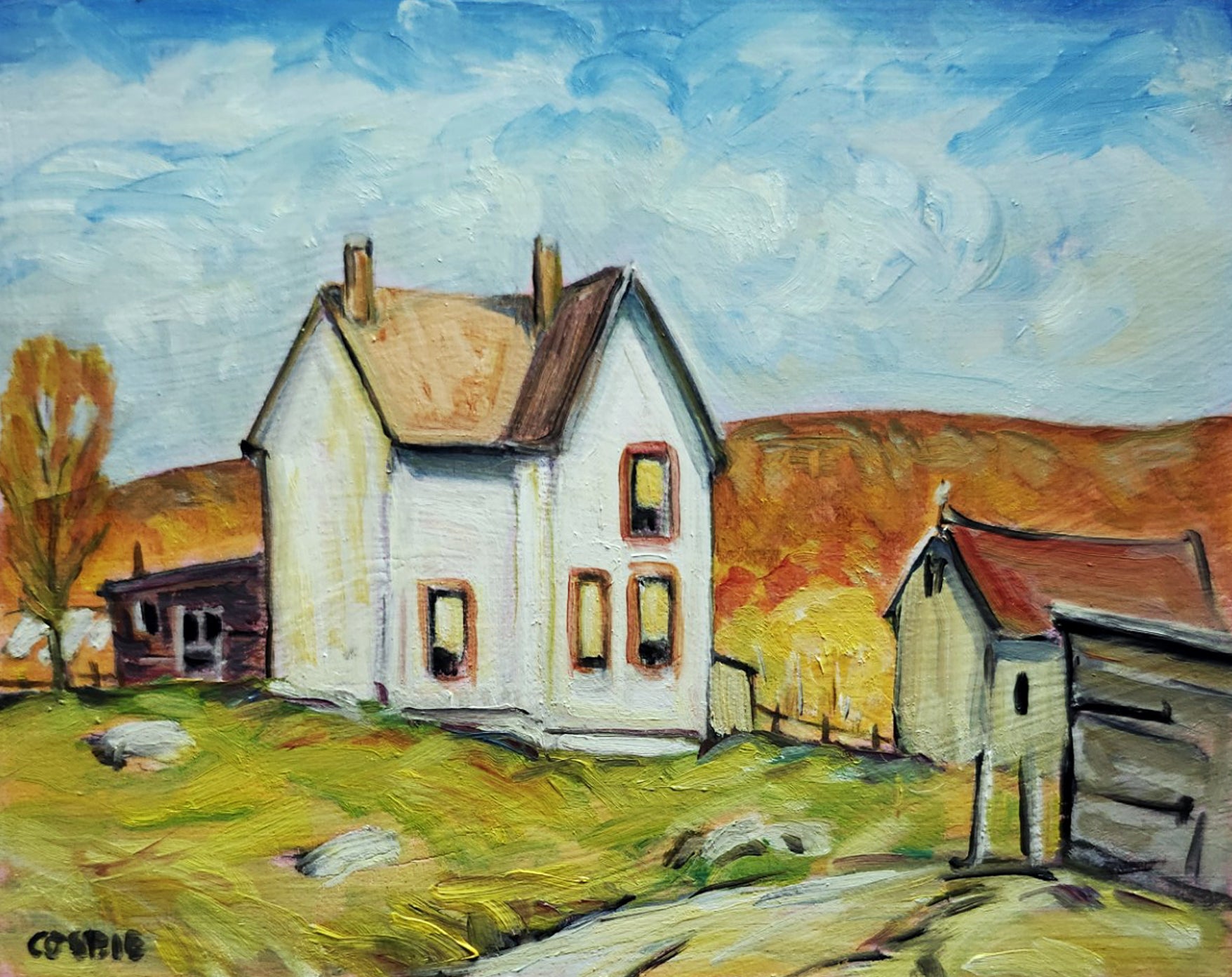Gallery-Inspired Interior Pieces: Oil Paintings for Sale
Wiki Article
Discovering All Concerning Oil Paints: A Guide to Understanding Their Beauty and Worth
Oil paintings have actually astounded target markets for centuries, using a peek into the imaginative proficiency of various periods. Their abundant history is intertwined with cutting-edge strategies and profound psychological expression. Comprehending the materials and methods behind these art work can improve gratitude. In addition, the market for oil paintings presents possibilities for capitalists and collection agencies alike. As one discovers this remarkable world, the question develops: what makes an oil painting absolutely important?The Background of Oil Painting: A Journey Through Time
Although oil painting has origins that go back to ancient times, it genuinely prospered throughout the Renaissance, when artists discovered its versatility and rich color possibility. Early examples can be mapped to the 7th century, with techniques progressing notably across societies. The tool came to be popular in Northern Europe in the 15th century, especially through the jobs of musicians like Jan van Eyck, who originated its usage for detailed realism and lively hues. This period noted a departure from tempera paints, permitting better depth and appearance. As oil painting spread, it affected numerous musicians, resulting in work of arts by prominent figures such as Leonardo da Vinci and Rembrandt. The medium's legacy proceeds, forming the art globe well into contemporary times.Recognizing Oil Repaints: Materials and Techniques
As musicians explore the globe of oil paints, they run into a varied array of materials and techniques that define this medium. The main parts of oil paint consist of pigments, which offer color, and drying oils, such as linseed, that bind the pigments and help with application. Different additives can customize the paint's structure and drying out time, improving flexibility. Strategies like glazing, where clear layers are built up, and impasto, which entails applying thick paint, allow for various visual results. In addition, using brushes, palette knives, and even fingers can create distinct structures and surfaces. Comprehending these methods and materials allows artists to fully express their creativity and attain the wanted influence in their art work.The Role of Color in Oil Paintings
Shade plays a crucial duty in oil paintings, influencing both aesthetic charm and emotional resonance. Recognizing color concept fundamentals, including the partnerships between hues, can boost a musician's capacity to communicate mood and environment. In addition, mastering shade mixing methods enables higher depth and richness in a painting's scheme.

Color Concept Essential
Recognizing color theory is essential for musicians collaborating with oil paints, as it creates the foundation for producing harmonious and aesthetically engaging compositions. Color concept includes the study of just how colors interact, the shade wheel, and the connections in between main, secondary, and tertiary shades. Artists make use of complementary colors to enhance contrasts and create prime focus, while analogous colors promote unity and cohesiveness within a piece. Additionally, the concepts of awesome and warm colors affect the perception of deepness and room in a painting. Realizing these principles enables musicians to manipulate color effectively, directing the viewer's eye and interacting their desired message. Mastery of color theory inevitably enhances a musician's ability to share emotions and ideas via their job.
Emotional Effect of Color
The psychological effect of shade in oil paintings plays an important duty in exactly how viewers view and link with artwork. Shades evoke details feelings and state of minds, influencing the viewer's mood. As an example, cozy colors like reds and oranges can produce a sense of heat and energy, while cool tones such as blues and environment-friendlies typically stimulate calmness or introspection. Artists strategically choose color palettes to improve narrative aspects, leading the target market's psychological trip. The saturation and comparison of shades further enhance these impacts, attracting focus and developing focus. Inevitably, the interplay of colors in oil paintings not only enhances their aesthetic appeal but also offers as an effective medium for emotional expression, enriching the visitor's experience and analysis.Shade Mixing Techniques
While lots of elements of oil painting contribute to the overall make-up, mastering color mixing techniques is important for achieving wanted results and deepness. Shade mixing can be come close to with various approaches, including the additive and subtractive processes. Additive mixing entails integrating colors of light, while subtractive blending relies on pigments, where shades blend to develop new tones. Artists usually use a limited scheme to create unified works, recognizing the relationships in between key, second, and tertiary colors. Methods such as glazing and scumbling further boost depth and luminosity. By masterfully blending shades, an artist can evoke feelings, create focal factors, and achieve a sense of realistic look, ultimately raising the paint's aesthetic and psychological effect.Famous Oil Painters and Their Iconic Functions

Well known for their mastery of color and technique, oil painters have developed several of the most renowned art work in history. Prominent artists like Vincent van Gogh captivated audiences with his stirring brushwork in "Starry Evening," while Claude Monet's "Impact, Daybreak" laid the foundation for Impressionism. Leonardo da Vinci's "Mona Lisa" stays an enduring sign of artistic brilliant, showcasing his skill in capturing human expression. Rembrandt's "The Evening Watch" highlights his cutting-edge use of light and shadow. Various other remarkable figures consist of Pablo Picasso, that changed modern-day art with his strong trial and error in jobs like "Les Demoiselles d'Avignon," and Georgia O'Keeffe, whose vivid representations of flowers and landscapes assisted define American innovation. Each musician's distinct style added substantially to the oil painting landscape.
Exactly how to Assess the Quality of an Oil Paint
Examining the quality of an oil paint includes a careful evaluation of craftsmanship strategies, in addition to an analysis of color and composition. Observing brushwork, layering, and the application of paint can disclose the artist's ability level. In addition, the interplay of colors and the general arrangement of components contribute substantially to the painting's visual value.Assessing Workmanship Techniques
A thorough evaluation of workmanship methods is vital for identifying the quality of an oil paint. Critics should first examine the application of paint; thick, distinctive brushstrokes may recommend a proficient hand, while excessively uniform applications can show an absence of depth. oil paintings for sale. The layering strategy is also crucial; the visibility of glazes and varied density can boost luminance and complexity. Furthermore, the top quality of the products used, such as the canvas and pigments, plays a considerable duty in sturdiness and total aesthetic. Interest to information in components like sides and shifts between colors shows the musician's dedication to their craft. Inevitably, these strategies add to the painting's emotional effect and market price, acting as indications of the musician's ability and intentAnalyzing Color and Composition
While assessing the high quality of an oil paint, one have to concentrate on the interaction of color and structure, as these aspects are basic to the art work's overall impact. Shade selections can evoke feelings and develop state of mind; therefore, the musician's scheme should be examined for harmony and contrast. A well-balanced composition routes the viewer's eye and creates a sense of unity. Musicians often employ strategies like the regulation of thirds or leading lines to boost aesthetic interest. In addition, the usage of light and shadow can add depth, improving the three-dimensionality of the paint. Ultimately, an effective oil paint marries color and make-up, engaging the viewer and welcoming a much deeper recognition of the artist's vision and strategy.Taking care of and Preserving Oil Paintings
Appropriate care and conservation of oil paintings is important for maintaining their honesty and longevity. To shield these art work, it is important to present them far from direct sunshine, which can trigger fading and discoloration. Keeping a steady setting with controlled temperature and humidity further help in preventing damages. Cleansing ought to be done delicately utilizing a soft, completely dry fabric, avoiding any kind of extreme chemicals that might harm the read more paint or varnish. Normal assessments for signs of damage, such as splitting or flaking, are a good idea. When storing or transporting oil paints, appropriate cushioning and framing are required to avoid physical injury. Eventually, persistent treatment contributes to the visual charm and worth of oil paints in time.The Marketplace for Oil Paints: Accumulating and Investing
Understanding the market dynamics for oil paints is essential for collection agencies and investors alike. The value of these art work is affected by various factors, including the artist's online reputation, historical value, and existing fads. Collection agencies typically look for items that reverberate personally while considering prospective admiration in worth. Galleries and auctions act as key places for trading, with prices varying based on demand and rarity. Buying oil paintings requires research into the marketplace, in addition to an understanding of authenticity and provenance. Furthermore, emerging artists may use opportunities for significant returns, while developed names can regulate high rates. On the whole, a strategic approach to collecting can generate both visual enjoyment and monetary benefits.
Regularly Asked Questions
What Are the Environmental Impacts of Oil Painting Materials?
The environmental effects of oil paint materials consist of the launch of volatile natural substances (VOCs), hazardous waste generation, and resource extraction for pigments. These elements add to contamination and environmental degradation, raising issues among environmentally conscious artists and customers.Just How Do Various Canvases Impact Oil Painting Results?
Different canvases affect oil paint results substantially. Surface, structure, and absorbency quality can alter paint application, drying times, and shade vibrancy. Musicians frequently select particular canvases to attain desired effects and improve their creative expression.Can Oil Paintings Be Recovered if Harmed?
If damaged, Oil paints can undoubtedly be recovered. Specialist conservators utilize various techniques to fix rips, tidy surfaces, and address discoloration, guaranteeing that the artwork keeps its initial appeal and value for future generations.What Are the Indicators of an Original Oil Paint?
The indications of an initial oil painting consist of noticeable brush strokes, structure variations, and an irregular canvas weave (oil paintings for sale). Additionally, credibility may be validated with provenance, signatures, and the presence of a varnish layer one-of-a-kind to oil mediumsHow Has Modern Technology Influenced Modern Oil Painting Techniques?
Modern technology has greatly affected contemporary oil paint techniques by presenting digital tools for preparation, enhanced products for texture and long life, and on the internet platforms for offering and sharing art, thus expanding musicians' imaginative opportunities and audience reach. Oil painting has origins that date back to ancient times, it really flourished throughout the Renaissance, when artists found its versatility and rich shade potential. The emotional effect of shade in oil paintings plays a critical role in exactly how visitors perceive and link with art work. While many facets of oil painting contribute to the general composition, mastering shade blending methods is important for achieving preferred impacts and deepness. Reviewing the high quality of an oil painting includes a mindful evaluation of workmanship strategies, as well as an analysis of color and composition. While assessing the high quality of an oil painting, one need to concentrate on the interaction of shade and structure, as these aspects are essential to the artwork's general effect.Report this wiki page